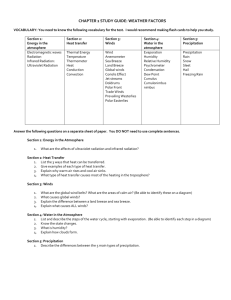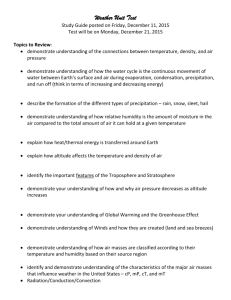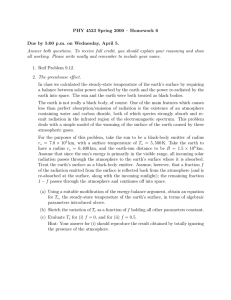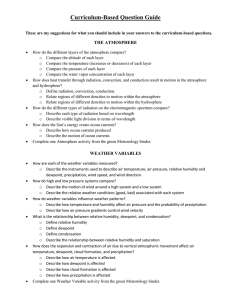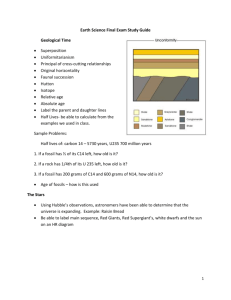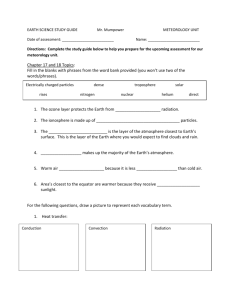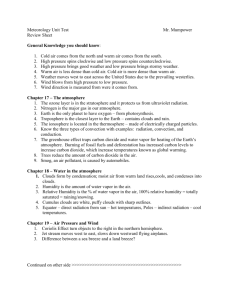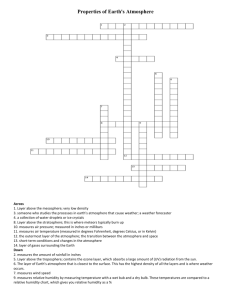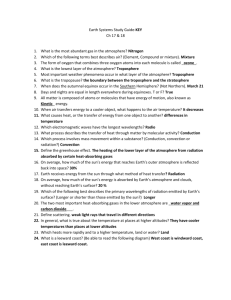Weather and Atmosphere Unit Study Guide 2013
advertisement
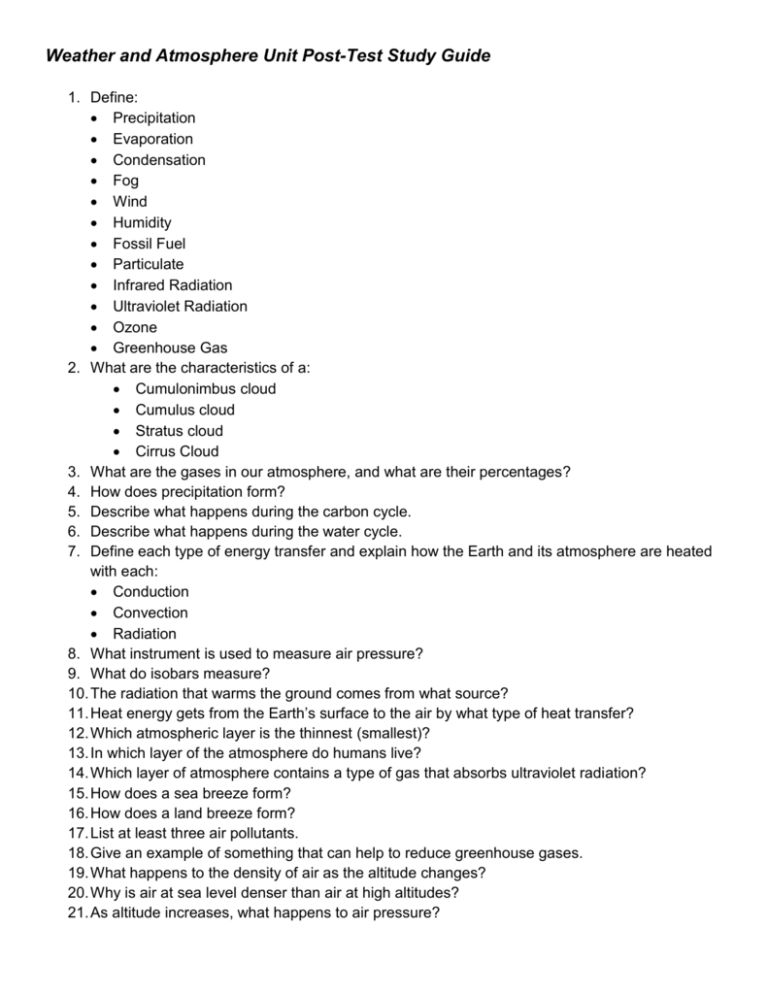
Weather and Atmosphere Unit Post-Test Study Guide 1. Define: Precipitation Evaporation Condensation Fog Wind Humidity Fossil Fuel Particulate Infrared Radiation Ultraviolet Radiation Ozone Greenhouse Gas 2. What are the characteristics of a: Cumulonimbus cloud Cumulus cloud Stratus cloud Cirrus Cloud 3. What are the gases in our atmosphere, and what are their percentages? 4. How does precipitation form? 5. Describe what happens during the carbon cycle. 6. Describe what happens during the water cycle. 7. Define each type of energy transfer and explain how the Earth and its atmosphere are heated with each: Conduction Convection Radiation 8. What instrument is used to measure air pressure? 9. What do isobars measure? 10. The radiation that warms the ground comes from what source? 11. Heat energy gets from the Earth’s surface to the air by what type of heat transfer? 12. Which atmospheric layer is the thinnest (smallest)? 13. In which layer of the atmosphere do humans live? 14. Which layer of atmosphere contains a type of gas that absorbs ultraviolet radiation? 15. How does a sea breeze form? 16. How does a land breeze form? 17. List at least three air pollutants. 18. Give an example of something that can help to reduce greenhouse gases. 19. What happens to the density of air as the altitude changes? 20. Why is air at sea level denser than air at high altitudes? 21. As altitude increases, what happens to air pressure? 22. Where is air pressure the highest: Mt Everest, on top of a skyscraper, at the bottom of the Grand Canyon, or at sea level? 23. What type of day would there most likely be 100% relative humidity: cool and sunny, cool and cloudy, cloudy and rainy, or cloudy and windy? 24. What would happen to oxygen and carbon dioxide levels if all the trees and plants in the world were killed? 25. What does the constant motion of air molecules cause? 26. A day where there is little particulate matter in the air can be described as: clear, hazy, stormy or windy? 27. What is the relationship between particulate matter and air quality? 28. What characteristics can be shown on a weather map? 29. What atmospheric property is associated with high humidity: warm air, high winds, low temperatures, or decreased precipitation? 30. How does wind form when the sun heats the surface of the Earth? (Think of the diagram you drew and put it into words.) 31. Why is it dangerous for an eye of a hurricane to pass over a town?
